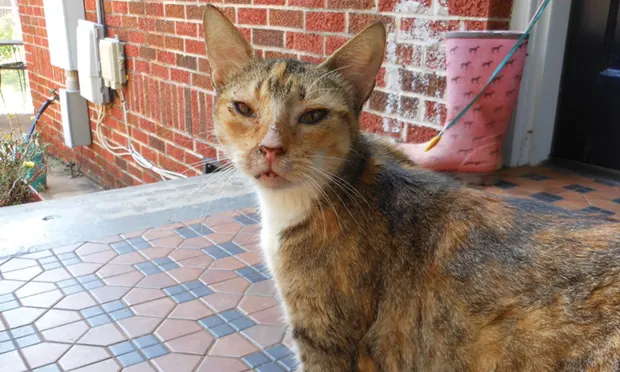Eye Disease in Cats: New Review, Lingering Questions

Records of 45 cases of feline eosinophilic keratoconjunctivitis (EKC) were reviewed. Median age at presentation was 5 years, and domestic shorthair cats accounted for 77.8% of cases. EKC is a progressive proliferative infiltrative keratopathy involving superficial vascularization of the cornea, progressing to involvement of the conjunctiva and third eyelid. Infiltration by eosinophils is the disease hallmark. In 75.6% of examined cases, presentation was unilateral; right and left eyes were affected with similar frequency, and the superotemporal quadrant of the cornea was most commonly affected (76.8%). Topical corticosteroids were prescribed in 95.6% of cases; 21 cats also received a topical antiviral treatment. Other treatments included topical cyclosporine A, L-lysine, topical olopatadine, and systemic corticosteroids. Mean and median times to improvement were 2.3 months and 1.5 months, respectively. Corneal ulceration was noted at or before diagnosis in 66.7%; 37.8% of all cases had a history of corneal ulceration. Eosinophils were present in 92.0% of corneal scrapings and FHV-1 viral DNA was detected in 54.5% of the 33 tested cats. FHV-1 DNA was detected in 66.7% of cats presenting with or having a history of corneal ulcer. This is significantly greater than the 22.2% of viral-infected cats with no history of corneal ulcer, suggesting that EKC cats presenting with corneal ulceration should be tested for FHV-1. In addition, cats with EKC-associated corneal ulceration may be started on antiviral therapy before PCR results are obtained.
Global CommentaryThis study served as a good review of what we know of feline EKC, including the confusion surrounding the name of the disorder, involvement of FHV-1 in its pathogenesis, clinical presentation, and diagnosis. It also provided new information regarding significant differences in FHV-1 prevalence between cases presenting with and without corneal ulceration. However, it lacked treatment and therapeutic guidance. Since FHV-1 is so prevalent in cats, many specialists will not prescribe topical steroid therapy (as recommended in the study) without concomitant antiviral treatment. Without such treatment, steroids may induce FHV-1 reactivation and worsen patient condition. In fact, because of the involvement of FHV-1 in feline EKC pathogenesis, some advocate beginning treatment with antiviral medications and only subsequently adding steroids in cases that do not improve.
The antiviral treatment provided to some patients is rather limited, although this may be because of restricted local availability. Ganciclovir has not been evaluated in vivo in cats, and studies of the efficacy of lysine and interferon have shown variable efficacy. Topical cidofovir and systemic famciclovir are becoming drugs of choice, where available.—Ron Ofri, DVM, PhD, DECVO
SourceFeline eosinophilic keratoconjunctivitis: A retrospective study of 45 cases (56 eyes). Dean E, Meunier V. J FELINE MED SURG 15:661-666, 2013.
This capsule is part of the WSAVA Global Edition of Clinician's Brief